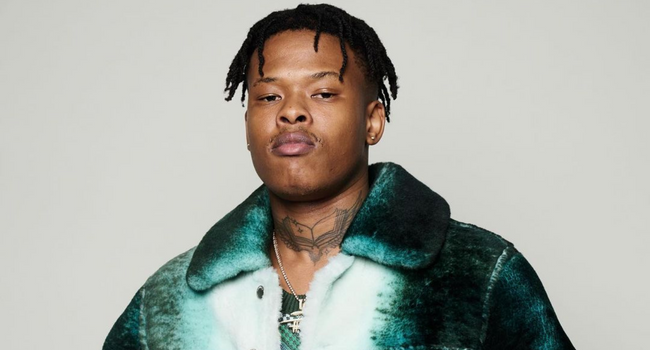When Nasty C announced the relaunch of Tall Racks as a digital platform for independent artists about a week ago, it landed with real momentum. The platform’s Instagram account has already amassed over 100,000 followers, proving significant interest — not just in the brand, but in the solution it’s promising.
The pitch is straightforward: smart contract-based royalty splits, direct payouts, global distribution, and real-time analytics — all designed to give artists control over their rights and earnings. It’s a vision many in the South African industry have been waiting for. But when we looked closer, the picture got murkier.
We checked the platform’s Terms & Conditions section and found that the Distribution Agreement, Privacy Policy, and Terms of Service are currently blank. In other words, artists signing up today cannot see the legal terms governing how their music will be handled, what rights they might give up, or how Tall Racks might make money from their work. It’s possible that these agreements only appear once an artist registers or uploads music. However, the lack of upfront transparency still raises concerns, especially for anyone wanting to review the terms or seek legal advice before committing. That’s a serious gap, especially for a platform positioning itself as artist-first.
Some operational details exist on the site, mostly covering how and when artists get paid. A “Distribution Reporting Schedule” explains that statements are issued on the 25th of each month, with DSP reporting lags of 60–90 days (Apple and YouTube are usually two months, Amazon varies, and smaller DSPs can take longer). Payments are triggered within 24–48 hours after statements, but delays are inevitable due to standard DSP reporting and payout cycles. A section also outlines situations where royalties may be withheld, such as rights disputes, suspected fraud, or unlicensed samples — all standard industry practices.
Tall Racks also has a clear subscription model. “Indie Artist Pro” currently costs $1/month (or $10/R178 annually) with an 80% royalty payout rate, while “Indie Label Plus” costs $5/month (or $50/R888 annually) with a 90% royalty payout rate. Both tiers limit the number of artist and admin accounts. This confirms at least one revenue stream for Tall Racks. Subscription-based distribution is common in the industry — competitors like DistroKid and Ditto also charge flat fees rather than taking large percentages of royalties — though the exact mix of fees, commissions, or other monetisation methods for Tall Racks is not yet confirmed.
While that helps clarify the mechanics of payouts, it doesn’t address the bigger question: what’s Tall Racks’ broader business model, and how will Nasty C and those involved profit? Aside from the subscription fees, no other revenue streams have been confirmed publicly. Typical industry models might include service fees, commissions, premium features, or equity plays — but for now, that’s speculation. Until the platform discloses this, artists are flying blind.
By contrast, other major distributors operating in South Africa, like DistroKid and Ditto, make their full legal agreements, privacy policies, and rights terms publicly accessible before sign-up. This allows artists to review the terms in advance — something Tall Racks currently doesn’t offer, making it less transparent than many of its established peers.
And this matters because the South African industry is already skewed against local talent. A 2021 GroundUp analysis revealed that of the R456 million the South African music industry made that year, a staggering R368 million went to international record labels, leaving just R88 million for local music companies. Once-powerful local players like Gallo have seen revenues collapse from R150 million to R14 million in 25 years. Independent record labels have dropped from about 80 documented in 1998 to only 20 today. The entire indie sector is now worth less than R30 million.
So, the need for something like Tall Racks is real. But the execution needs to match the ambition.
Other African initiatives have already shown what’s possible. Nigeria’s emPawa Africa, founded by Mr Eazi, has supported artists with funding, mentorship, and access to major platforms like YouTube and Kobalt. Its biggest success story, Joeboy, broke through with over 20 million streams on his debut single. Ghana’s Aftown, launched in 2016, is a streaming and mobile payment platform that continues expanding into Francophone markets.
At home, the Quiet Life Co’s Artist Accelerator Programme (AAP) is accepting its second round of entries. Artists like PSILK and giuliette price have already benefited, and the first instalment of their Industry Accelerator Programme has just launched alongside it. These are early but concrete efforts to build something better.
If Tall Racks wants to join that conversation, it must go beyond bold announcements and slick branding. It must offer transparency, clear legal frameworks, and real support, especially to artists outside major cities with limited access to banking, data, or legal advice.
We’re cautiously optimistic. The idea has merit, and the public response is encouraging. But until the platform clarifies how it works, how it profits, and how it protects artists, that optimism comes with a giant asterisk.
This isn’t a write-off — it’s a call for accountability. If Tall Racks delivers on its promise, it could be a significant step forward for South African music. But if it doesn’t? It risks repeating the very cycles it claims to disrupt.



